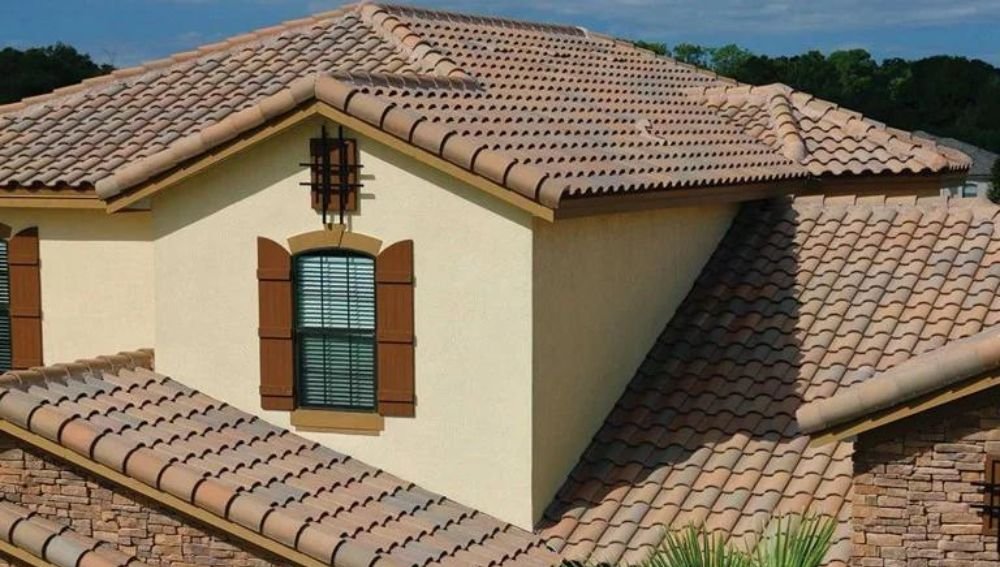The roof is one of the most critical parts of any building types, and it plays a crucial role in protecting the interior from harsh weather conditions. A well-built and maintained roof ensures that the interior of the building remains dry, comfortable, and safe for the occupants.
Several reasons why proper roofing guidelines are essential
There are several reasons why proper roofing guidelines are vital:
- A well-designed roof ensures rainwater and snowmelt flow away from the building in an efficient way. This roof prevents water from seeping into the building’s structure. Without a cover, it would cause water damage, mold growth, and structural decay.
- Proper roofing guidelines ensure that the roof is durable and long-lasting. A well-constructed roof can withstand harsh weather conditions. It will last many years without requiring major repairs or replacements.
- A well-designed and installed roof can help reduce energy costs. Using energy-efficient materials and insulation, a roof can prevent heat loss in the winter. It will keep the interior cool in the summer, reducing the need for heating and cooling systems.
- A well-maintained roof can increase the value of a property. A potential buyer will consider the rooftop’s condition before purchasing a property. A roof maintained or damaged in substandard conditions can reduce the property’s value.
- Appropriate roofing guidelines ensure the safety of the occupants. A damaged or poor roof construction can pose a safety hazard to the occupants. It’s especially true during harsh weather conditions such as high winds, heavy rain, or snow.
A proper roof is critical for the safety, comfort, and value of a building. Ethical roofing guidelines ensure the top is well-designed. It also guarantees it is durable, energy-efficient, and safe for the occupants.
Proper Roofing Guidelines Overview
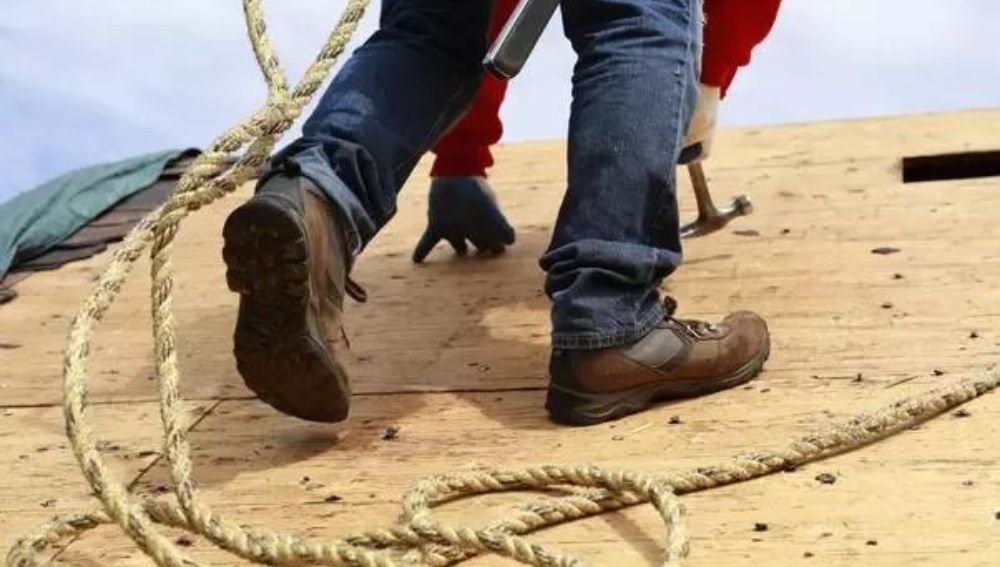
This section will provide an overview of the importance of a proper roof and the need for adequate roofing guidelines.
The roof is an essential component of any building, whether it’s a residential or commercial property. It serves as the first line of defense against natural elements like:
- Rain
- Wind
- Snow
- Provides Insulation
A strong roof will keep the building warm during the cold months and cool during the hot summer months. A proper roof is critical to the safety and structural integrity. Ethical roofing guidelines are necessary to ensure adequate roofing installation or roof repairs.
Poor roof installation or maintenance can lead to various issues. These issues include leaks, water damage, mold growth, and even structural damage. These problems can result in costly repairs, damage to personal property, and even health risks to the building’s residents. In extreme cases, damaged or poor roof maintenance can even collapse. It can cause significant harm to the people living in the building and to the property.
Proper roofing guidelines are necessary to ensure professional roof installation. A competent and safe roof repair is a must. These guidelines provide the steps needed to ensure the roof is structurally sound. It also needs adequate insulation, and be able to withstand natural elements. They also outline the safety precautions you should take during the installation or repair. It is necessary to lower the risk of accidents and injuries.
It’s vital to follow proper roofing guidelines for new installations and repairs. Following these guidelines will ensure the correct roof installation for new rooftop installations. From the outset, minimizing the need for costly repairs or replacements down the line. Proper procedures will ensure roofers complete the repairs accurately. It will reduce the risk of further damage and prolong the roof’s lifespan.
A proper roof is critical to the safety and structural integrity. Adequate roofing guidelines are necessary to ensure proper installation and repairs. By following these guidelines, property owners can:
- Lower the risk of damage to their property
- Reduce the need for costly repairs
- Ensure the safety of their building’s occupants
Choosing Suitable Roofing Materials
This section will discuss the available types, their pros and cons, and how to select the best material for your building.
Roofing Permits and Regulations
Roofers need to get roofing permits and regulations with the local city codes. These are vital steps in any roofing project. It begins with researching your area’s local building codes and regulations. They must:
- Determine the type of permit required
- Gather the necessary documentation
- Submit the application to the relevant authority
- Await permit approval and schedule
- Pass inspections to ensure compliance with:
- Approved plans
- Meet rules and regulations
By following the necessary steps, homeowners and contractors can ensure:
- Legal compliance
- Protect your property against legal issues
- Ensure the safety and durability of your roofing project
Roofing Materials
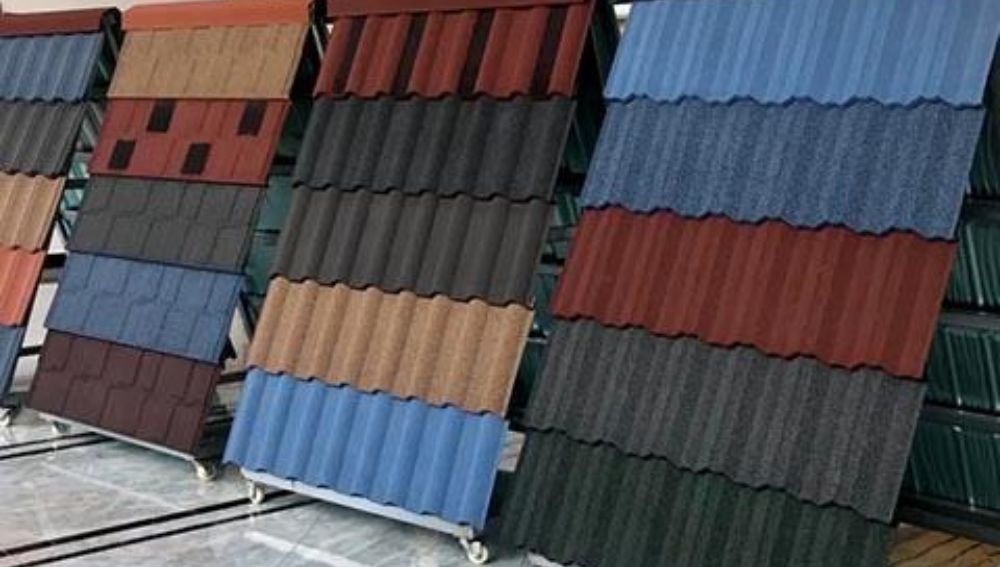
Roofing materials are essential for constructing and repairing roofs of buildings. Different types of roofing materials are available. Selecting the right one depends on factors such as the style, design, climate, and durability needed for the project.
Typical roofing materials include:
- Asphalt shingles
- Metal
- Slate
- Wood shake
- Tile
- Rubber roofing
Each material has distinctive characteristics. They depend on cost, aesthetics, durability, and performance under weather conditions. For instance, metal roofs resist high winds. Sloped roof covers help shed water efficiently in regions with high rainfall. Understanding the pros and cons of each type of roofing material can help homeowners and contractors make wise decisions. It ensures the correct installation and maintenance of the roof. Selecting a suitable roofing material is crucial for protecting the interior of buildings. It also protects its occupants from environmental factors. It enhances the property’s aesthetic appeal.
Installing The Roofing Material
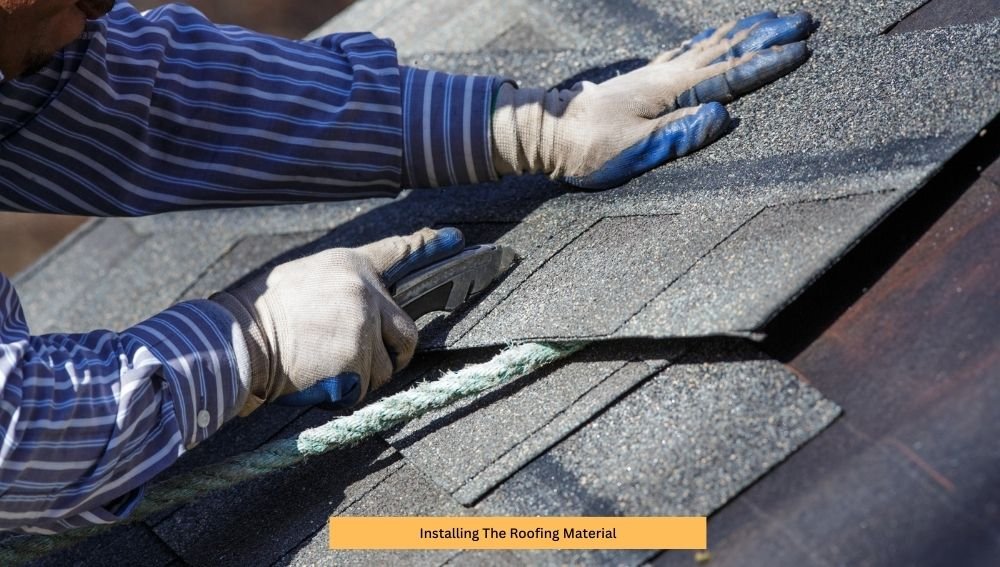
Installing the roofing material is a crucial step in the roofing installation process. It involves a careful and precise fitting and fastening method. The selected roofing materials on the roof deck will ensure durability. They also protect the house from environmental factors. Installation methods and techniques vary depending on the type of material used. Installing asphalt shingles involves overlapping and nailing individual shingles to the roof deck. Metal roofing installation requires fastening metal panels into the roof deck. They use specialized clips or fasteners. Adequate roofing material installation is critical to:
- Prevent leaks
- Ensure proper drainage
- Provide sound insulation
It is crucial to seek the services of a professional roofing contractor. They must have experience in installing the specific type of roofing material chosen. Their expertise will ensure correct installation techniques, material handling, and safety precautions. Homeowners and contractors can ensure a smooth, efficient, and effective roofing installation. They follow the proper installation procedures. The goal is to provide long-lasting protection to the building and its occupants.
Factors to Consider When Choosing Roofing Materials
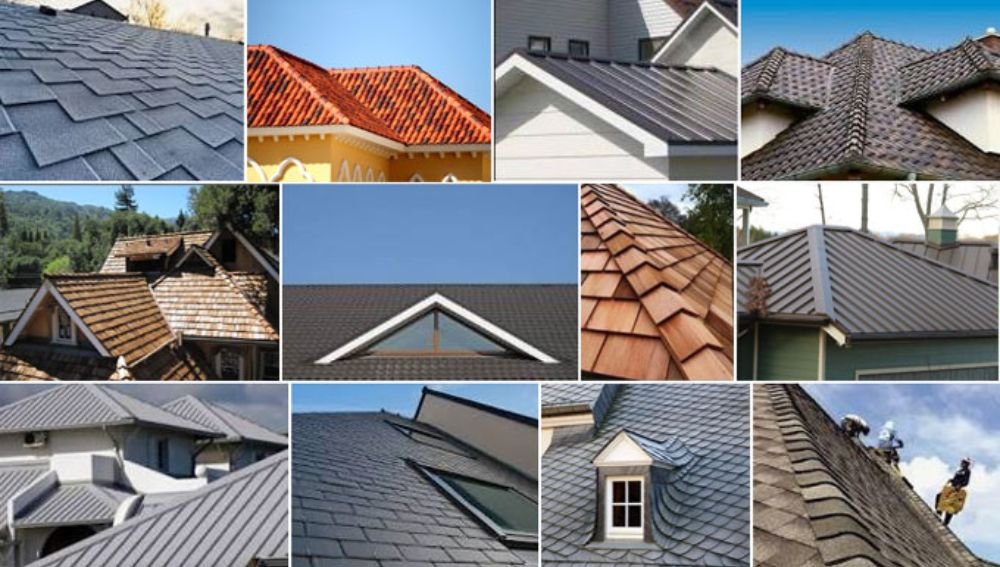
The factors to consider when choosing roofing materials involve considering several aspects. You need to ensure the success and longevity of the project. The factors include the building’s style and design, climate conditions, durability, and cost. Different grade roofing materials have different strengths and weaknesses. For once, asphalt shingles are among the most popular roofing materials. Their popularity is due to their affordability and availability. Metal roofs are durable and long-lasting. You should review the roof’s slope, pitch, and structural support to discover the most suitable roofing material.
Environmental factors such as wind, hail, snow, and UV rays often affect the roofing materials’ longevity. Contractors prefer metal roofing for its high resistance to wind. It affects rain regions with harsh weather conditions. Other factors to consider when selecting roofing materials include color, texture, and aesthetics. They ensure that the roofing components complement the style and design of the building. Homeowners and contractors can select the most appropriate roofing material. It provides optimal protection, durability, and aesthetic appeal while maintaining an affordable budget.
Roofing Design
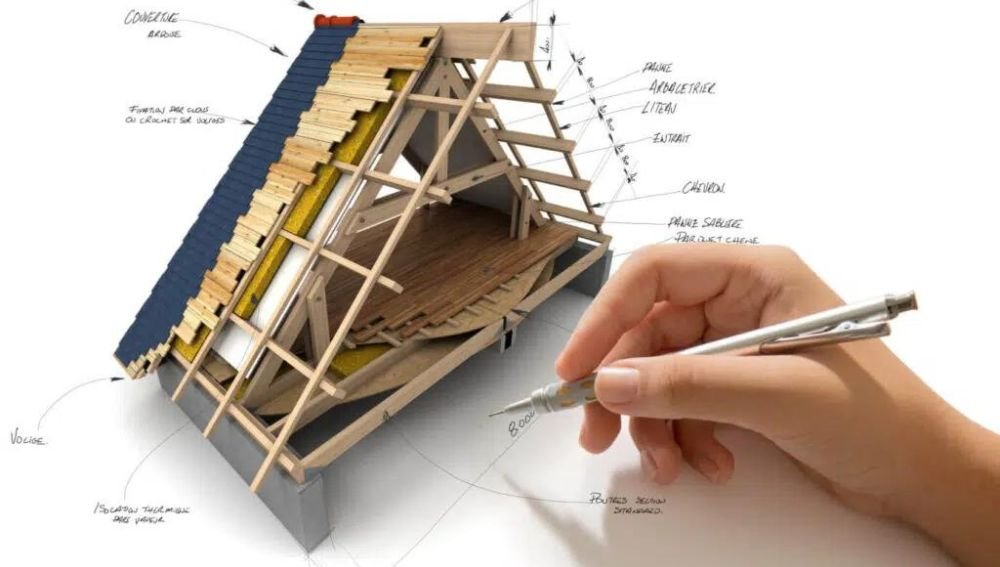
The different roof design types are crucial aspects. They affect the appearance, functionality, and energy efficiency of a building’s roof. Among the most critical roof design factors are climate, building codes, and personal preferences. You should be able to select a suitable design when you consider these factors.
Various roofing designs are available. These include:
- Gable roofs
- Hip roofs
- Flat roofs
- Shed tops
- Mansard roofs
Each roof type has unique characteristics and advantages. Roofers must consider factors such as the roof’s slope, pitch, and orientation. They select the most appropriate roofing design.
Proper ventilation, insulation, and aesthetic elements like materials and colors are crucial. Seeking professional expertise ensures an optimal design that combines durability, attractiveness, and efficiency.
Different Roof Design Types Enhance Your House Appearance
When designing a house, the roof is vital to functionality and aesthetics. Every design type has its unique features, advantages, and considerations. Understanding the different roof design types and their significance helps homeowners. They can select the most suitable option for their special home needs.
Roof design types enhance the house’s appearance and serve relevant functional purposes. One of the primary functions of a roof is to protect against the elements. Different designs offer varying degrees of resistance to rain, snow, wind, and extreme temperatures. Steep-pitched roofs are excellent at shedding rainwater and snow. Flat roofs provide more accessibility and space for installations like solar panels.
Proper airflow and ventilation help regulate temperatures inside the house. It prevents moisture buildup and enhances energy efficiency. Some roof design types, such as gable roofs, have adequate air circulation. They have triangular shapes or ridge vents.
Roofing Preparation
Preparing The Roof Surface
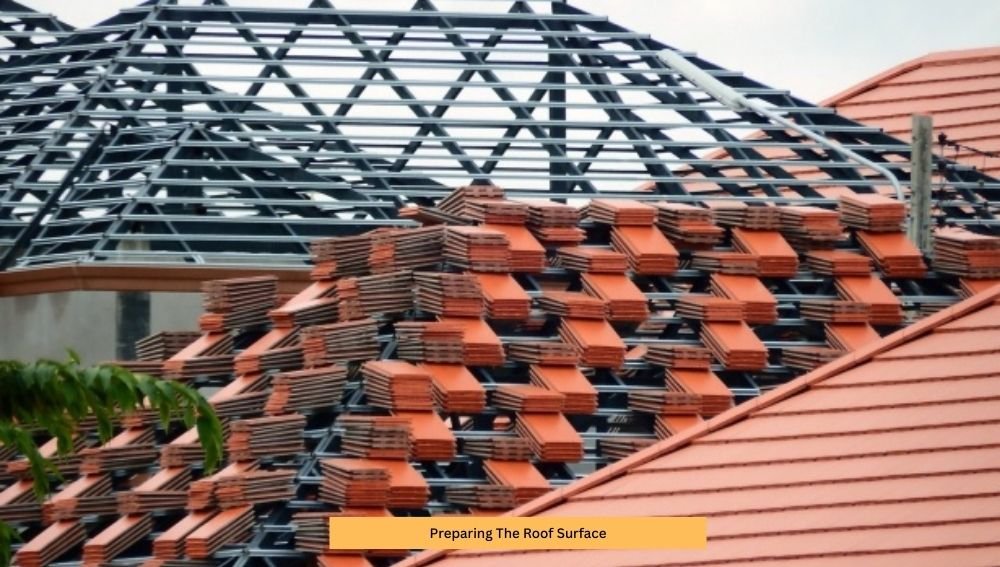
Roofing preparation is vital in the installation or repair process. It sets the foundation for a successful roofing project. It involves several necessary tasks, including:
- Inspecting the roof for damage
- Ensuring proper ventilation
- Repairing any underlying issues
- Preparing the roof surface to install roofing materials
Proper ventilation is crucial for maintaining a comfy indoor environment. It prevents moisture buildup that can lead to mold growth and other issues. Inspecting and improving the roof’s ventilation system includes:
- Ridge vents
- Soffit vents
- Exhaust fans
It’s part of an integral part of the preparation process.
Repairing any underlying issues, such as damaged sheathing or rotten wood, is necessary. It ensures a stable and secure surface for the roofing materials. This step may involve replacing:
- Damaged sections
- Reinforcing weak areas
- Applying sealants for added protection
- Preparing the roof surface involves various tasks:
- Cleaning debris
- Removing old roofing materials
- Applying underlayment or moisture barriers
This step ensures proper adhesion and protection against water infiltration and moisture damage.
Roofing Installation
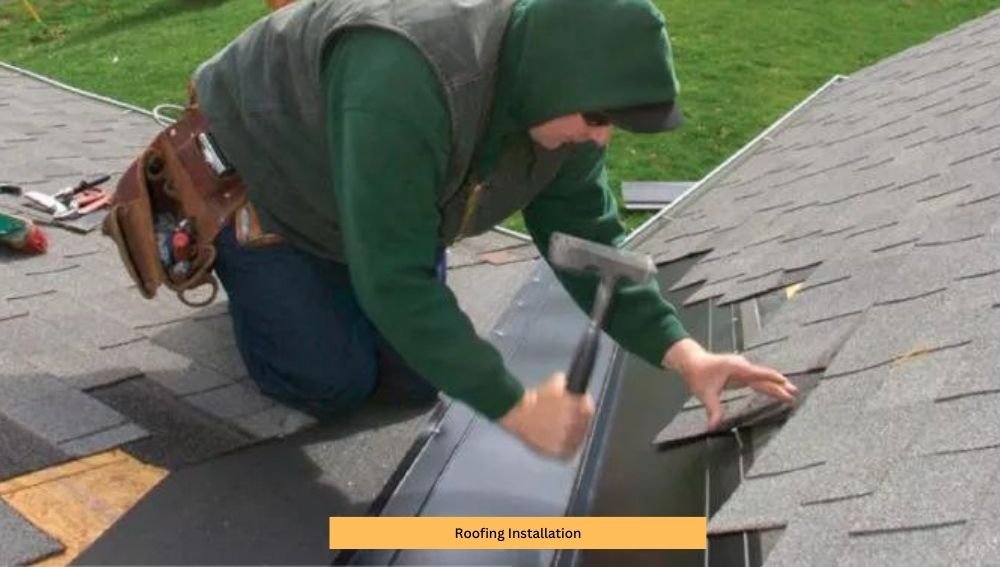
Roofing installation is a critical process. It needs careful planning, skilled craftsmanship, and high-quality materials. It involves several key steps, including:
- Preparing the roof surface
- Installing underlayment felt
- Applying roofing materials
- Ensuring proper flashing and ventilation
Preparing the roof surface is crucial for creating a stable and secure base. This preparation phase may involve removing old roofing materials, repairing damaged areas, and cleaning debris. A smooth and clean surface ensures proper adhesion and longevity of the new roofing materials.
Roofing Installation Phases
The roofing installation process involves several phases: inspection, material selection, and installation. Here’s a comprehensive breakdown of the roofing installation process:
- Roof Deck
- Roof Ventilation
- Underlayment (Roofing Felt)
- Flashing and Drip edge
- Skylight
- Shingles or Tiles
Flashing and Drip Edge
This section will cover the importance of proper flashing and drip edge details, including how to install and maintain them.
Roof Ventilation
This section will discuss the importance of proper roof ventilation and how to ensure adequate roof ventilation.
Roofing Maintenance
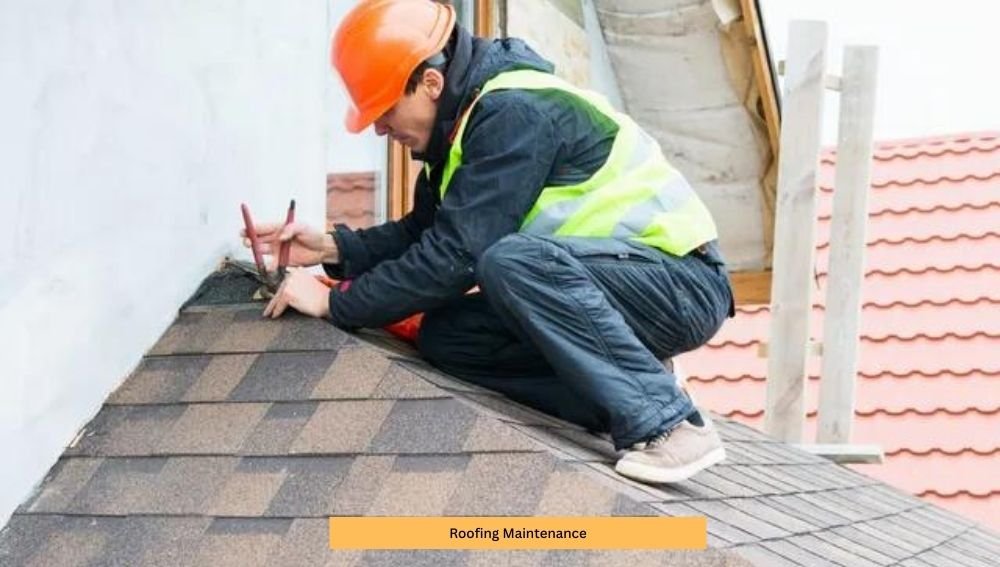
Roof maintenance is a crucial aspect of preserving the integrity and longevity of a building’s roof. It involves:
- Regular inspections
- Proactive repairs
- Preventive measures
The goal is to address potential issues before they become significant problems.
Regular maintenance also includes inspecting and maintaining flashing, and seals. Other components protect vulnerable areas on the roof, such as chimneys, vents, and skylights. Periodic inspections may give cues for any necessary repairs or replacements. It helps maintain the roof’s water tightness and structural integrity.
Professional roofers have the knowledge and expertise to conduct thorough roof maintenance. Their experience enables them to identify potential issues. They recommend appropriate maintenance measures and perform effective repairs.
Homeowners can extend the lifespan of their roofs when they invest in regular roof maintenance. It ensures their durability and functionality. Besides, you can also avoid costly repairs or premature replacement. This proactive approach to roof maintenance safeguards the home and provides peace of mind for the homeowner.
Roof Repairs
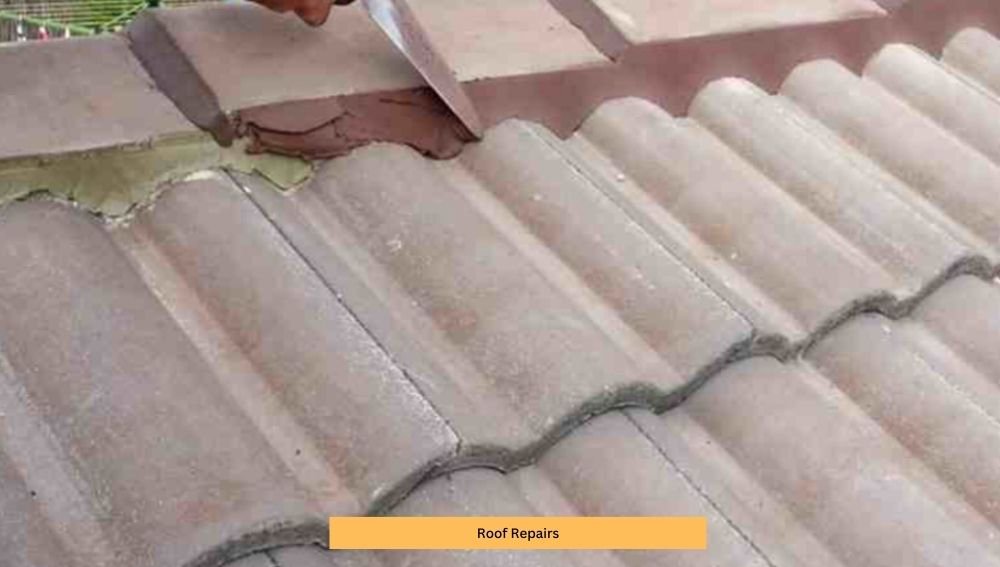
Roof repairs are necessary to maintain a sound structure and watertight roof. They involve identifying and addressing issues that compromise the integrity of the roof. These repairs include leaks, damaged shingles, deteriorated flashing, or structural damage.
The first step in roof repairs is a thorough inspection to assess the extent of the damage. This check includes identifying areas of concern, such as water stains, mold growth, or visible signs of deterioration. Proper identification of the problem enables homeowners to understand the necessary repairs.
Structural repairs may be necessary for roofs that have experienced significant damage or wear and tear. These repairs may include:
- Reinforcing weakened areas
- Replacing damaged sheathing
- Addressing structural issues
Changes in the building’s foundation or settling caused the need for repairs. Structural repairs need the expertise of professionals to ensure safety and structural integrity.
FAQs
How long does it take to install a roof?
The duration of a roofing project depends on various factors. They include the roof’s size, the project’s complexity, and the weather conditions. On average, a roofing project can take between 1 and 3 days.
What is the lifespan of a roof?
A roof’s lifespan depends on various factors. These factors are:
- The type of material used
- The quality of the installation
- The maintenance practices
For instance, asphalt shingles can last 15–30 years, while metal roofing can last up to 50 years.
Changes in the building’s foundation or settling caused the need for repairs. Structural repairs need the expertise of professionals to ensure safety and structural integrity.
